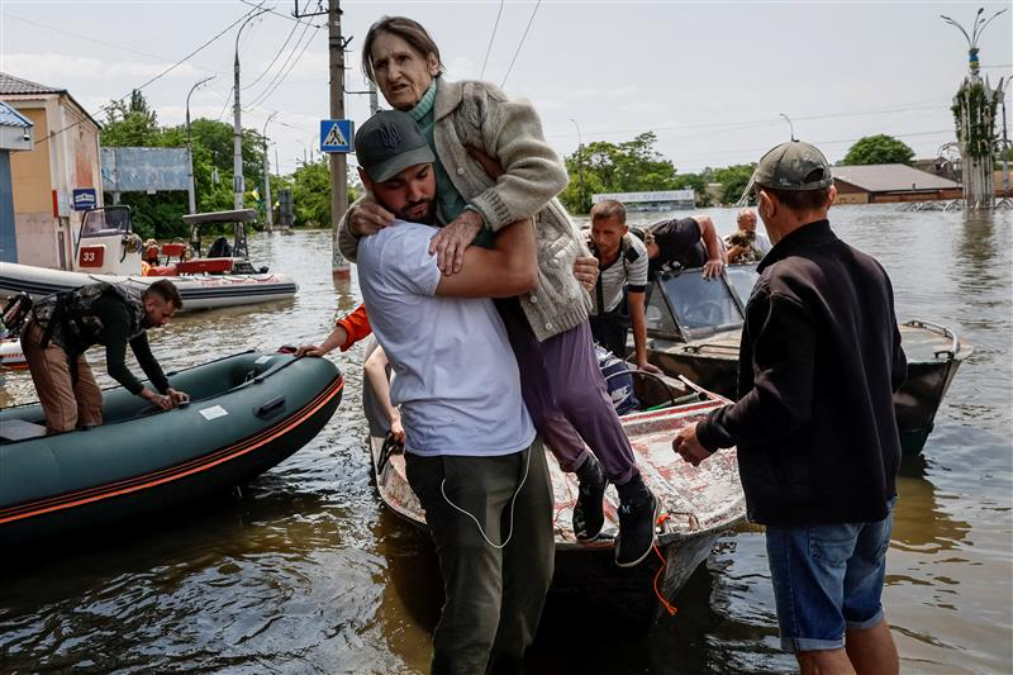Wake-up Call for Europe: Ukraine's Kakhovka Hydroelectric Power Plant disaster
 Kakhovka Hydroelectric Power Plant disaster
Kakhovka Hydroelectric Power Plant disaster On Tuesday, June 6, the Kakhovka Hydroelectric Power Plant, situated in Nova Kakhovka in Southern Ukraine, was struck by a calamitous event, now recognized as the largest technological disaster in Europe in decades. The severity of the incident cannot be understated, as the plant’s dam, turbines, and generators were completely devastated, leading to significant repercussions for the affected areas and beyond.
Responding to the gravity of the situation, the Ukrainian government has issued evacuation orders for high-risk areas. The flood zone encompasses approximately 80 settlements, with urgent advisories for residents on the left bank of the Dnipro River in the Kherson region to evacuate immediately. On the right bank, a critical zone is currently housing at least 16,000 individuals who face imminent danger.
Despite the absence of reported casualties, as stated by local officials, the emergency poses a significant threat to the region’s food and water supply, as well as the ecosystem of Crimea and the Black Sea. The ramifications of this disaster extend far beyond the immediate aftermath and have already caught the attention of global organizations.
Responding to the crisis, CARE partners from the charity organization Vostok-SOS have launched evacuation operations from Kherson to Mykolaiv.
CARE Ukraine’s Area Manager in Southern Ukraine said in a statement, “together with partners, CARE will ensure that the immediate needs of affected communities are met, delivering essential non-food items, water, and equipment (including generators and water filtration and purification systems) to those who are staying in the Kherson region, as well as to thousands of people who might be displaced as a consequence of the floods.”

The Kakhovka Hydroelectric Power Plant disaster marks the most significant incident of damage to civilian infrastructure since the start of the Russian Federation’s invasion of Ukraine. As the United Nations Emergency Relief Coordinator warned the Security Council, the consequences will be grave and far-reaching for thousands of people in southern Ukraine. Immediate humanitarian needs are expected to rise as floodwaters continue to spread.
The flooding has already impacted at least 40 settlements in Kherson, partially or fully submerging them. This sustained flooding will disrupt farming activities, leading to extensive damage to livestock and fisheries—a massive blow to an already struggling food production sector. Moreover, fast-moving water will displace projectiles to previously safe areas, posing further danger from mine and explosive ordinance contamination. Additionally, the destruction of the dam may negatively affect electricity generation and, consequently, the safety of the downstream Zaporizhzhia Nuclear Power Plant.
The far-reaching ramifications of Ukraine’s hydroelectric power plant emergency extend beyond the immediate aftermath. Reconstruction efforts will be necessary to restore livelihoods, ensure access to clean water and food, and rebuild damaged infrastructure. Neighboring countries may experience spillover effects, including disruptions in energy supply and potential environmental damage.
According to ROBERT A. WOOD, Ambassador Robert A. Wood, Alternate Representative of the United States for Special Political Affairs in the United Nations, the United States is in close contact with Ukrainian authorities about helping many civilians who have been uprooted and forced to leave their homes in search of safety and will keep cooperating with aid organizations on the ground.
Inside Telecom provides you with an extensive list of content covering all aspects of the tech industry. Keep an eye on our Impact section to stay informed and up-to-date with our daily articles.
